“A man who became comatose after a fall counted on his daughter, who was assigned to be his guardian, to oversee his finances. However, she withdrew $10,000 from her father’s savings account and made $20,000 in cash advances from another account. When questioned, she said that her father always gave her generous gifts and would wish to continue to do so.” As the population of older Americans grows, so does the risk of abuse, neglect, and exploitation of the elderly. Courts are charged with protecting the well-being and assets of persons who are placed under a guardianship or conservatorship. Because many judges only see a few guardianship cases, special resources to help them prevent and address problems are necessary. With support from SJI, NCSC has recently developed several such tools.
To guide judicial considerations when establishing a guardianship, the Pre-appointment Protocol provides examples and directs court staff to the next step at each stage in the process. The Guardianship/Conservatorship Judicial Response Protocol serves as an interactive tool to advise judges on steps to take and options to consider when allegations of wrong-doing have been made.
Courts cannot effectively monitor guardianship and conservatorship cases unless they have good information, yet the ability of state courts to provide basic data on these cases, let alone track those in which allegations of abuse or exploitation arise, is often inadequate. That is where the Guardianship/Conservatorship Monitoring: Recommended Data Elements come into play. They provide guidance on what data courts should collect and how to define it and use it to monitor cases. The need for judicial guardianship protocols, adequate data collection and tracking systems has become a priority for many state court leaders. NCSC’s newest resources contribute to reaching that goal. They can be found, along with other information and training resources, on the website for the Center for Elders and the Courts.

